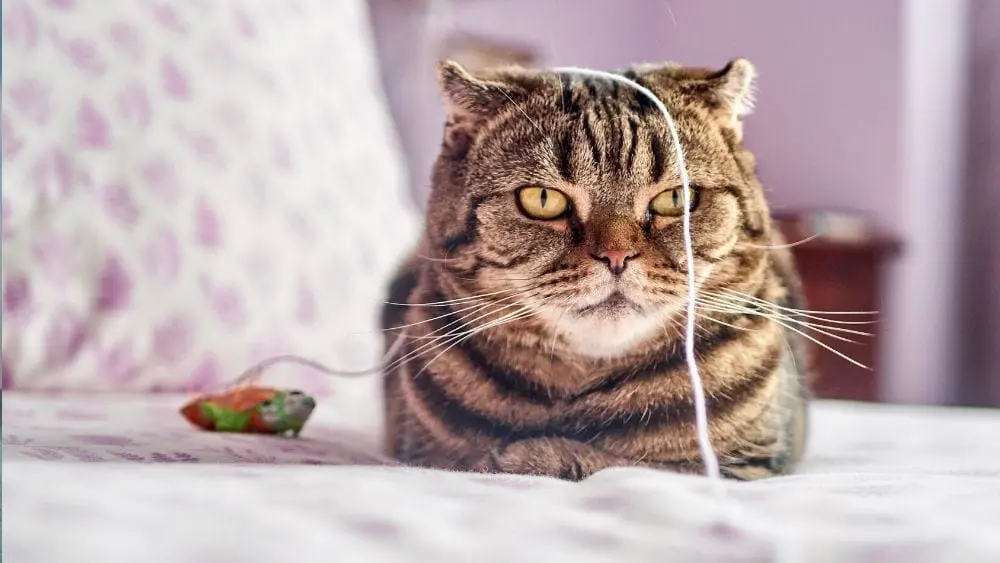
As anyone with a cat will tell you, cats are the real homeowners (homeowner even has the word “meow” in the middle of it), and we humans just live with them. As a good human roommate, though, you’re responsible for making sure the house is safe for your kitty – and keeping it safe from the kitty. We’ve gathered a list of tips for new and old cat owners alike so you can better cat-proof your house to keep your fur baby happy, and to keep your home looking great.
Keep Poisons Out of Reach
Kitties are mischievous creatures, prone to getting into anything and everything – including where they don’t belong. This includes kitchen cabinets, under the bathroom sink, the laundry room, and other places where you most likely store cleaning and detergent products. When figuring out where to store your home products, make sure that all cleaning materials are either out of reach or closed very, very tightly, so a curious cat can’t open the containers and get into the toxic substances. Simply placing the lid on your box of Tide pods won’t cut it. And if you find yourself thinking “There’s no way my cat will be able to open this cabinet door!”, think again. Cats are crafty! Particularly mischievous cats may even require childproof locks on your cabinet doors.
Double Check Your Indoor Plants
Cat ownership means you need to think twice before you bring home that nice plant or bouquet of flowers you’re admiring at the nursery. Several common houseplants are actually poisonous for cats, including lilies, tulips, poinsettia, and aloe vera. If a cat ingests these plants, side effects can range from stomach issues to death, if untreated. If you simply must have lilies for Easter, keep them in a room where the cat isn’t allowed, and always double check that your kitty is out of the room and the door is closed all the way. However, to fully ensure pet safety, we suggest considering Boston ferns, roses, or sunflowers, all of which are safe for feline friends.
Buy Scratching Posts
One common concern about owning a cat is what it means for your good furniture, your curtains, and your walls. Clawing is a natural, normal instinct for cats, and in the absence of good scratching materials, they’ll turn on your furniture, especially your sofas, chairs, and even your carpet. Instead of declawing a cat, which is actually banned in certain cities, provide your cats with plenty of scratching post options. Some cats will prefer a traditional scratching post, some will prefer a scratching mat or a pad. Try buying a few and see which your kitty prefers!
Beware of Open Windows
Large windows are a key feature in modern decorating, and they provide ample opportunities for bird watching to sunbathing, so cats love windows, too. However, open windows pose a danger for cats, especially if you live in a multiple-story home. The temptation of an open window could lead to your cat escaping or falling, both of which can be harmful for your cat. To protect your kitty while still allowing for fresh air to enter your home, make sure you don’t leave any open windows unattended. If your window has screens, make sure the screens are securely fastened so a cat can’t push them out of place and escape.
Keep Wires and Cords as Coiled as Possible
Speaking of temptations, no toy is more fascinating to cats than things that aren’t really toys. An old favorite is thin cords, particularly ones for phone chargers or headphones; cats love to bat these with their paws and even chew on them. Not only can this be dangerous to cats if the electronics are plugged in, but replacing these chargers and headphones can be expensive! To prevent this, try keeping all wires secured and coiled as much as possible. For your TV and other large electronics, try hiding them in the wall – not only will you fur baby be safer, but your home will look a little nicer, too.
Pick Up Miscellaneous Items
Small items such as string, rubber bands, paper clips, hair elastics, and other small, shiny, or wiggly materials are just crying for a cat to play with them. While they may seem like easy ways to entertain your cat, they’re not always the safest. Small items like these can be choking hazards, and can lead to digestive issues or even death. No doubt you are cleaning your home regularly, but aside from a regular sweep and vacuum, make sure you are checking behind couches, under side tables, and in other hiding places for small, potentially harmful items.
Secure Your Large Furniture
Once a cat is comfortable in your home, he or she is likely to explore every nook and cranny – this includes climbing furniture! Cats like to climb and situate themselves high up, so bookcases, shelving units, and entertainment centers are all fair game for an adventure. The danger here is, if the furniture isn’t properly secured, the furniture could end up toppling over and onto your cat! Make sure that your furniture is secured to the floor and wall to prevent any accidents. If any of your furniture feels loose, consider rearranging or replacing it with something sturdier.
Owning a cat can be a wonderful, rewarding experience. Whether you’re getting your first cat or your fourth, follow these tips to make sure your home is ready for your feline friend.

Sarah graduated from Trinity University in 2012 with a degree in International Relations and Political Science. She writes blogs on new homes, decor, communities, and more for NewHomeSource. When she’s not writing, you can find her spending time with her three cats.
 How to Prepare Your Garden for the Winter
How to Prepare Your Garden for the Winter